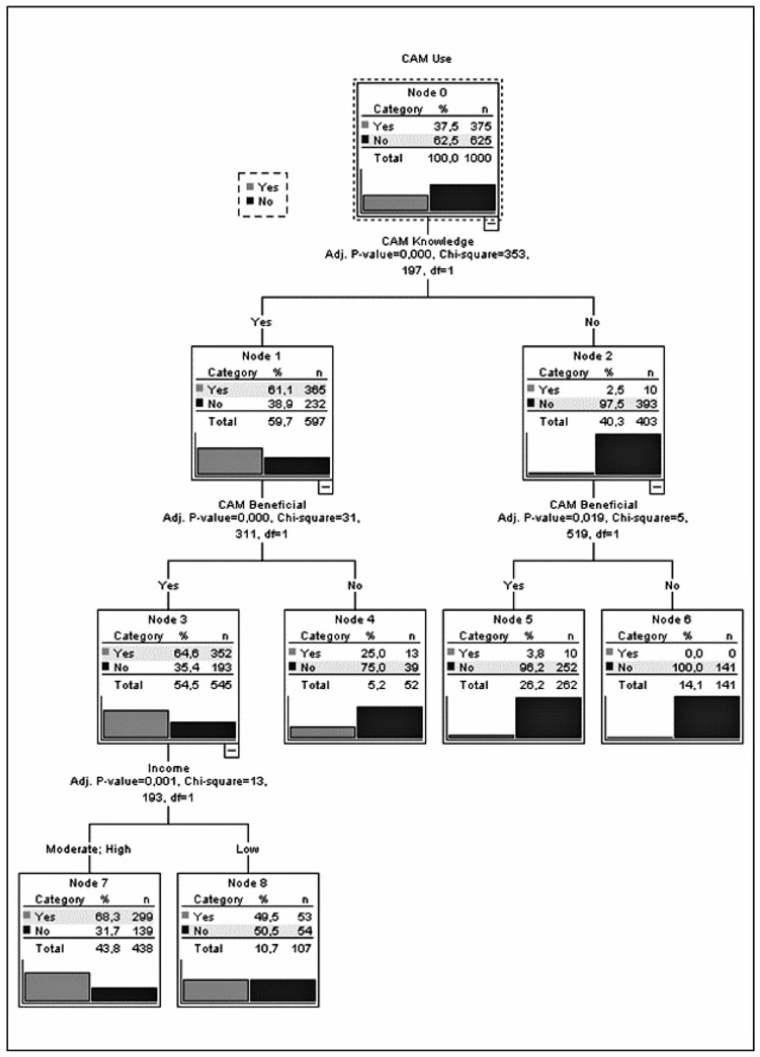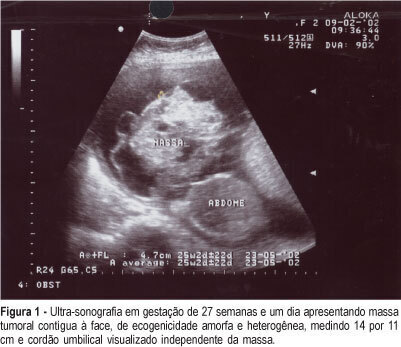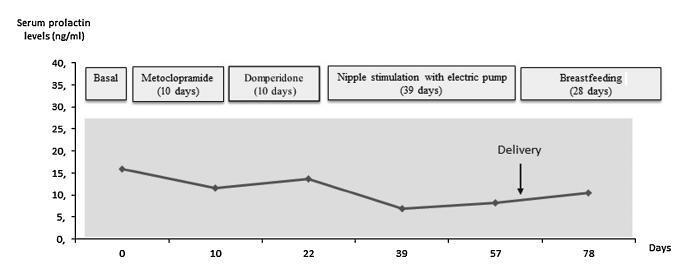Summary
Revista Brasileira de Ginecologia e Obstetrícia. 1999;21(2):85-90
DOI 10.1590/S0100-72031999000200005
Purpose: to present a profile of endometriosis, stages and results of treatment among the patients seen in our Service. Methods: the medical records of 155 patients with endometriosis treated during the period from 1991 to 1996 according to a preestablished protocol were examined. Results: mean patient age was 31 years, most patients were white, with regular menstrual cycles. The most frequently observed symptoms were dysmenorrhea, pelvic pain and infertility and were mild in most of the cases. The diagnostic methods utilized were laparoscopy or echography. There was agreement between echography and laparoscopy in 96% of cases. Laparotomy was required in 28% of cases for diagnostic elucidation and/or treatment. Endometrioma was detected in 37% of the cases and endometriosis was confirmed in only 74% of the biopsies from the lesion by anatomopathological examination. There was a significant improvement with clinical treatment regardless of the drug used, with improved symptoms in approximately 50% of the patients. Assisted fertilization was performed in 34 patients, consisting of in vitro fertilization (IVF) for 80% of them, with a 27% pregnancy/transfer rate. Conclusions: the diagnostic method of choice should be laparoscopy, although echography presented a high rate of agreement. Anatomopathological examination of the lesions should be used as an adjuvant method in the diagnosis since it is not confirmatory in all of the cases. Clinical treatment with assisted reproductive technologies is a good therapeutic option, especially with the use of IVF.
Summary
Revista Brasileira de Ginecologia e Obstetrícia. 2020;42(12):851-855
Summary
Revista Brasileira de Ginecologia e Obstetrícia. 2021;43(11):853-861
To evaluate the knowledge, attitudes, and behaviors regarding complementary and alternative medicine methods of patients who were admitted to gynecology outpatient clinics.
In the present survey, a questionnaire on complementary and alternative medicine practices was applied on 1,000 women (ages between 18 and 83 years old) who were admitted to the gynecology outpatient clinic of a tertiarymaternity hospital. Demographic features and knowledge, attitudes, and behaviors about these methods were inquired in face-to-face interviews.
While 80.7% of the total participants thought that complementary and alternative medicine was beneficial, only 37.5% of them had used these methods previously. The rate of prior knowledge on this subject was of 59.7% and the source of information was physicians for 8.5% of the patients. However, 72.4% of all participants wanted to obtain information on these methods and 93.7% wanted to be informed by physicians. In the decision tree model, having knowledge about complementary and alternative medicine was the most effective factor determining its use (p<0.001). Phytotherapy was found to be the most used method, with 91.4%. The most preferred plant was onion (18.9%), and the most common reasons for herbal use were stress (15.4%) and fatigue (15.2%).
More than one-third of the patients who applied to the gynecology outpatient clinics used one of the complementary and alternativemedicine methods at least once. As gynecologists and obstetricians, we need to be more knowledgeable about these methods to provide correct guidance to our patients for accessing accurate and effective information.

Summary
Revista Brasileira de Ginecologia e Obstetrícia. 2022;44(9):854-865
To comparatively evaluate the outcome of treatment with 150 versus 200 units (U) of botulinum toxin in achieving pain-free intercourse and relieving muscle contraction in order to allow gynecological examination.
In this comparative prospective observational study, 99 patients with vaginismus were treated with botulinum toxin injections from September 2016 to August 2021. Diagnosis and grading of vaginismus severity were assessed using a Female Sexual Function Index (FSFI) questionnaire. Under local or general anesthesia, botulinum toxin diluted with preservative-free saline (150 U and 200 U) was injected into, above, and below the right and left bulbospongiosus muscle and the lateral submucosal areas of the introitus and perineal body using an insulin syringe. Patients were recalled after 2 weeks, and the postoperative outcome was recorded using a similar preoperative questionnaire.
Overall, the mean age of patients was 30.2 years. The baseline and clinical characteristics were comparable between the 2 groups (p > 0.05). Significant improvements were seen in the pain and anxiety scores of finger penetration, dilator use, intercourse, and cotton swab in individual groups. The intergroup comparisons between 150 U and 200 U of Botox were not statistically significant (p > 0.05).
Low-dose Botox (150 U) is equally effective as high dose Botox injections (200 U) in vaginismus patients. Therefore, Botox-150 U can be used to treat vaginismus as an alternative to high doses of the same substance.

Summary
Revista Brasileira de Ginecologia e Obstetrícia. 2005;27(2):86-91
DOI 10.1590/S0100-72032005000200008
Oropharyngeal teratoma is the most rare type of teratoma, with only 2% of fetal teratomas. The diagnosis must be established as early as possible, preferably during the prenatal period. The prognosis will depend on the size and location of the lesion, growth rate of the lesion, degree of intracranial spread, its resectability, and immediate care at birth by a multisciplinary team. We report aparticular case of congenital oropharyngeal teratoma (epignathus). The diagnosis was made during the prenatal period by ultrasound, and the fetus evolved to intrauterine death at the 29th week. The anatomopathological examination revealed a female fetus, compatible with 27-28 weeks, oropharyngeal teratoma and congenital malformations.

Summary
Revista Brasileira de Ginecologia e Obstetrícia. 2012;34(2):86-91
DOI 10.1590/S0100-72032012000200008
PURPOSE: To evaluate the actions of the "Um Beijo Pela Vida" Program developed in a Brazilian Northeast city to increase adherence to breast cancer screening by women registered by the Brazilian Family Health Strategy for breast cancer screening. METHODS: A quantitative approach was used to evaluate the coverage of screening actions for aged 40 years-old or more. Community workers from the nine Family Health Teams of the town carried out an active search. The percentage of eligible women who were screened for breast cancer by clinical breast examination or mammography, mammogram classification according to BI-RADS®, women screened who were referred for further testing and treatment, and the number of breast cancers detected were collected by means of a structured questionnaire, analyzed with the EPI-INFO TM software and compared to previously defined patterns. RESULTS: 3,608 women were included, corresponding to 68.4% of the target population registered in the Brazilian Family Health Strategy. Coverage rates of clinical breast examination for women aged 40 to 49 years-old and of mammograms for women aged 50 to 69 years-old were 58.9 and 56.7%, respectively. All women with highly suspicious mammographic lesions were submitted to fine needle aspiration or core biopsy (100%). Six new cases of cancer were detected and 80% of the standards established for this evaluation were carried out. CONCLUSIONS: The evaluation of the actions of the Program suggests its adequacy considering the degree of fulfillment of the previously defined requirements.
Summary
Revista Brasileira de Ginecologia e Obstetrícia. 2018;40(2):86-91
To compare the quality of cervicovaginal samples obtained from basic health units (BHUs) of the Unified Health System (SUS) and those obtained fromprivate clinics to screen precursor lesions of cervical cancer.
It was an intervention study whose investigated variables were: adequacy of the samples; presence of epithelia in the samples, and cytopathological results. A total of 940 forms containing the analysis of the biological samples were examined: 470 forms of women attended at BHUs of the SUS and 470 forms of women examined in private clinics in January and February of 2016.
All the unsatisfactory samples were collected at BHUs and corresponded to 4% of the total in this sector (p < 0.0001). There was a higher percentage of samples containing only squamous cells in the SUS (43.9%). There was squamocolumnar junction (SJC) representativeness in 82.1% of the samples from the private clinics (p < 0.0001). Regarding negative results for intraepithelial lesions and/or malignancies, the percentages obtained were 95.9% and 99.1% (p < 0.0049) in the exams collected in the private system and SUS, respectively. Less serious lesions corresponded to 0.89% of the samples from the SUS and 2.56% of the tests from the private sector; more serious lesions were not represented in the samples obtained from BHUs, whereas the percentage was 1.49% in private institutions.
Unsatisfactory cervical samples were observed only in exams performed at the SUS. There is a need for guidance and training of professionals who perform this procedure to achieve higher reliability in the results and more safety for women who undergo this preventive test.
Summary
Revista Brasileira de Ginecologia e Obstetrícia. 2017;39(2):86-89
Case report of a 39-year-old intended mother of a surrogate pregnancy who underwent induction of lactation by sequential exposure to galactagogue drugs (metoclopramide and domperidone), nipple mechanical stimulation with an electric pump, and suction by the newborn. The study aimed to analyze the effect of each step of the protocol on serum prolactin levels, milk secretion and mother satisfaction, in the set of surrogacy. Serum prolactin levels and milk production had no significant changes. Nevertheless, themother was able to breastfeed for four weeks, and expressed great satisfaction with the experience. As a conclusion, within the context of a surrogate pregnancy, breastfeeding seems to bring emotional benefits not necessarily related to an increase in milk production.
